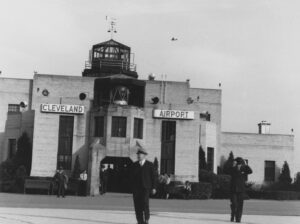
Reimagining Cleveland’s Lakefront With a 5-Mile-Long Redevelopment: Commentary
by Ken Predergast, November 2025
The link is here
www.teachingcleveland.org

Reimagining Cleveland’s Lakefront With a 5-Mile-Long Redevelopment: Commentary
by Ken Predergast, November 2025
The link is here
Teaching Cleveland Welcome Page
Welcome to Teaching Cleveland Digital phase 2
Here is the original site

Unfortunately it was an old platform and the time had come to move on
Also unfortunately all of our links from google are lost too. But the search function works pretty well. So just enter the topic you want to find in search and it should should pop up
Thank you for your patience. Click on the photos below if you want more content on the people shown
or use Google with a topic and “Teaching Cleveland” in search.
This link takes you to a search button
This link takes you to a recommended 5 week reading list
This link goes to “Teaching Cleveland Stories”
Cleveland Stories: An Informal Look at the City’s Past
A 5 Week essay-based syllabus suggested by Dr. Marian Morton, professor emerita at John Carroll University with expertise in Cleveland area history.
Overview: A discussion of some of Cleveland’s most interesting and important people, places, and events
Objective: To link the city’s past with its present policies, politics, and practices
Week 1. Introduction. Read Teaching Cleveland Stories (TCS): John J. Grabowski, “Cleveland: Economics, Images, and Expectations”
Week 2. TCS: Mike Roberts and Margaret Gulley, “The Man Who Saved Cleveland.” Elizabeth Sullivan, “Immigration” John Vacha, “The Heart of Amasa Stone”; Joe Frolik, “Mark Hanna: The Clevelander Who Made a President”
Supplemental: TeachingCleveland.org:
Connecticut Western Reserve Aggregation
Lorenzo Carter Aggregation
Moses Cleaveland Aggregation
Battle of Lake Erie/War of 1812 Aggregation
The Erie and Ohio Canals Aggregation
Amasa Stone Aggregation
Building the Railroads
Charles F. Brush Aggregation
Flora Stone Mather Aggregation
Henry Flagler Aggregation
Immigration Aggregation
James A. Garfield Aggregation
John D. Rockefeller Aggregation
Manufacturing in Cleveland Aggregation
Mark Hanna Aggregation
Philanthropy in Cleveland Aggregation
Samuel Mather Aggregation
Social Settlement Movement Aggregation
Steel Industry in Cleveland Aggregation
Transportation in Cleveland Aggregation
Timeline of Cleveland/NE Ohio;
Week 3. TCS: John J. Grabowski, “Cleveland 1912 – Civitas Triumphant”; Joe Frolik, “Regional Government versus Home Rule” John Vacha, “When Cleveland Saw Red” Margaret Bernstein, ‘’Inventor Garrett Morgan, Cleveland’s Fierce Bootstrapper” Marian Morton, “How Cleveland Women Got the Vote and What They Did With It”
Supplemental: TeachingCleveland.org:
Tom L. Johnson Aggregation
Newton D. Baker Aggregation
Frederick Howe Aggregation
Maurice Maschke Aggregation
Ohio Constitution Aggregation
Regional Government vs. Home Rule in Northeast Ohio
Collinwood School Fire Aggregation
The Group Plan Aggregation
Eliot Ness Aggregation
The Van Sweringen Aggregation
Highway System Creation in Northeast Ohio
Black Political Power in Cleveland: Pre World War II
Public Housing/Ernest Bohn Aggregation
WPA in Cleveland Aggregation
Great Lakes Exposition Aggregation
John O. Holly Aggregation
Cleveland Orchestra Aggregation
Garrett A. Morgan Aggregation
The Metroparks Aggregation
Cleveland Clinic Origins Aggregation
Fred Kohler Aggregation
Week 4. TCS: Thomas Suddes, “The Adult Education Tradition in Greater Cleveland” Bill Lubinger, “Bill Veeck: The Man Who Conquered Cleveland and Changed Baseball Forever” Jay Miller, “Cyrus Eaton: Khruschev’s Favorite Capitalist” Roldo Bartimole, “One Man Can Make a Difference” Mike Roberts, “Cleveland in the 1960s” and “Cleveland in the 1970s”
Supplemental: TeachingCleveland.org:
Carl Stokes Era as Mayor Aggregation
Cleveland Aggregation
Cuyahoga River Fire Aggregation
Cyrus Eaton Aggregation
Frank Lausche Aggregation
Dennis Kucinich as Mayor Aggregation
Glenville Riots Aggregation
Hough Riots Aggregation
Kent State Shootings Aggregation
Lake Erie Aggregation
Martin Luther King in Cleveland Aggregation
Water Aggregation
Week 5. TCS: Mike Roberts, “Cleveland in the 1980s” and “Cleveland in the 1990s” Supplemental: TeachingCleveland.org:
“10 Greatest Clevelanders”;
“12 Most Significant Events”;
Cleveland Politician Interview Series (George Forbes, Jim Rokakis, Louis Stokes, George Voinovich, Michael R. White); Mike Roberts,
“Cleveland in the 2000s“
George Forbes Aggregation
George Voinovich Era as Mayor Aggregation
Louis Stokes Aggregation
Mike White Era as Mayor Aggregation
Playhouse Square Aggregation
General questions: what is the main point of each article? Did you agree or disagree? What did you find most interesting? What would you add? Or subtract?


Tribute to PD Editorial cartoonist predecessors
by Jeff Darcy, Plain Dealer, October 5, 2025
Jeff Darcy’s farewell, in his own words
The link is here
Agnes Gund passed away on September 18, 2025.
This article in Cleveland.com was written by Steven Litt in Cleveland.com on May 26, 2023

Mary Rose Oakar, pioneering Ohio congresswoman, dies at 85
by Sabrina Eaton, Cleveland.com
September 14, 2025
The Cleveland Democrat served eight terms, championed women’s economic rights and secured $400 million for breast cancer research during her congressional career.
The link is here



Sewer District recommends removing Lower Lake Dam in Shaker Heights, Cleveland Heights
by Steven Litt 7/23/25, Ideastream

The Northeast Ohio Regional Sewer District will soon recommend removal of the Lower Lake Dam in Shaker Heights and Cleveland Heights, resulting in the draining of Lower Lake, replacing the lake bed with 17 acres of park land.

100 Years of Historic Firsts at CLE
(Cleveland Hopkins International Airport)
by Paul Soprano, July 1, 2025
The link is here